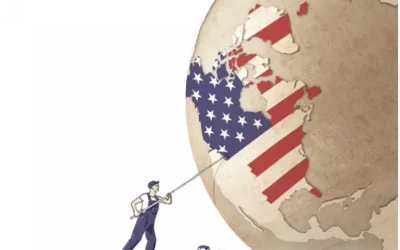I am disturbed at the wastage and indifference to extravagance of water-use here compounded by the lack of understanding and absence of overall adequate direction and planning.

By David Madison

It’s –8°C outside, snow covers the ground and the forecast is for temperatures to drop to the –20°C range. Okanagan Lake steams in the cold air and its surface seems to shiver with the gusts carving cat’s paws on the black water. There is nothing here that suggests global warming or water shortages or seasonal drought. That’s the problem! The whole issue of climate change and looming water shortages seems completely incongruous. It’s like a fire in the attic – you don’t see the threat until it’s too late; then it quickly becomes a catastrophe. We are coming closer to that catastrophe with every month that we fail to take action.
The Okanagan is a very sensitive ecological region. Sheltered by the Coast Mountains, the Valley enjoys an arid climate as the prevailing subsiding winds lose moisture to the higher plateau. Summers are warm and dry and winters are cold, but not to the extremes of the central and northern areas. For hundreds of years the First Nations people lived and thrived in the Valley – they hunted and fished and existed in harmony with the resources that the Valley offered. Then came the white settlers. The summer was too dry for productive agriculture, so they found ways of bringing the water from the higher lakes to the fields and orchards in the Valley. Water was abundant. Communities grew. Water was brought to every home and was there at the twist of a tap. Waste disposal was not a problem – septic systems gave way to sewer systems, and the waste water was returned to Okanagan Lake where it blended, dissolved and dissipated. It was a huge body of water – and there was an endless supply.
No one knows the real value of water until the well runs dry. We in Canada have been blessed by unlimited access to water. We bathe in it, wash with it, pour it on our crops, sprinkle our lawns with it, clean the dust off our cars with it, drink it, cook with it, and flush away our waste with it. The average British Columbian uses a whopping 638 litres per day, more than twice that used by the average person in France. Of this consumption, about 65% occurs in the bathroom. We humans are composed of 65% water. Without water – we die, and fairly quickly too. But water is everywhere isn’t it? Water is unlimited – at least in this country, isn’t it?
That is the crux of the problem. We need to change our attitude toward water and realize that it is like any of the earth’s resources – finite. This finite resource is facing even greater demands in the Okanagan as two factors combine – population growth and climate change. The population of the Central Okanagan has doubled from its 130,000 people in 1976. All you need to do is take a short drive around the cities of Vernon, Kelowna or Penticton to see the sprawling new subdivisions that now reach well onto the dry hillsides of the valley to realize how much growth has happened within the last 10 years. We all seem to aspire for the same thing, a detached home with a broad expanse of lawn, perhaps a swimming pool, and an unrestricted flow of water. That might be possible if nature cooperated, but nature seems in a contrary mood as climate statistics suggest.
Historic climate data collected from records kept by places such as Coldstream Ranch tell us that the summers are getting warmer and the winters are becoming shorter. The onset of the snowmelt at the McCulloch Lake area now begins 11 days earlier than it did in 1945. Dr. Jim Byrne, an expert in snow hydrology at the University of Lethbridge has done studies in the Okanagan. “It’s been well documented and validated that we are seeing a warming trend on a global scale,” he says. “By 2050, we could be seeing winters that are 3 – 4 °C warmer on average and summers that are between 1° and 3° warmer. This could shift the winter average temperature close to 0°C.”
The water problems facing the Okanagan have been no secret.
What difference does a few days or degrees make? We on this planet live on a knife-edge between drought and ice which, based on yearly averages, is only about 8°C wide. Drop about 4°C cooler and we enter another ice age, warm by the same amount and we see the ice sheets of Antarctica and Greenland melt, ocean levels rise, wind patterns change, ocean currents change and the whole planet becomes less hospitable. It is really in our best interest to pay attention because climate change knows no political or socio-economic boundaries. Initiatives such as the Kyoto Accord are right-minded but we can’t fine-tune the climate on short notice. Actions to reduce greenhouse gasses may not bring results for decades – but if we don’t start now….
So to the local scene. The water problems facing the Okanagan have been no secret. In the early 1970s a large study was conducted and made recommendations about preserving the integrity of our water supply. The results were minimal. The recommendations received the typical sober nods from the bureaucrats who then did nothing because nobody gets reelected by telling people they have to stop wasting water. If you can walk on water or cause it to divide, then you have a good election platform, but to suggest we should create a central authority to control water in the Okanagan Basin was not something our leaders ran with.
John Huby, a retired Kelowna professional engineer with extensive experience in water supply, says, “I am disturbed at the wastage and indifference to extravagance of water-use here compounded by the lack of understanding and absence of overall adequate direction and planning.” Huby, who strives to bring about a better appreciation of the water resource, has written an eight-point action plan which has been recently endorsed by the Central Okanagan Naturalists’ Club. “The paper, with 21 covering letters, was mailed to provincial officials and local municipal leaders throughout the Okanagan Valley,” he says. “This produced only six responses, all failing to adequately address concerns about water.”
The problems outlined in the Okanagan Water Basin Study of 1974 failed to disappear over the next 30 years. Our summers have been getting measurably warmer, water use increased with population and summer temperatures, snow pack has been smaller, spring run-off has been earlier, and winter precipitation has been more in the form of rainfall. Now snow is not only great for ski resorts, it also acts as a huge “storage battery” for water. The upper lakes of the plateau do not have the capacity to store all the water we need. Snow does, but it needs to hold this water and release it gradually to prolong the runoff so we will have sufficient water for the period of highest demand for both household and agricultural use later in the summer. Spawning fish would also need cool-flowing streams in late summer if we are to sustain a viable fishery.
If the snow melts too quickly, the upper lakes fill quickly and must allow the surplus runoff to flow into Okanagan Lake. “Rainfall does not make rivers,” says Dr. Jim Byrne, “It’s the snow melt that creates the streams and rivers which flow into Okanagan Lake.” That lake now becomes our prime reservoir. Okanagan Lake is big, about 150 kilometers long; it also very slow moving. It will take about 60 years for the water in Okanagan Lake to completely change. This means that water pumped from the lake today may have entered the lake during World War II. Dr. Jeff Curtis of O.U.C. – Kelowna points out, “If one imagines not the lakes of the Okanagan but the Okanagan River through Penticton as our supply for the population, we can see what a small supply we really have. This is how we end up with about 10% of the Canadian average per capita water supply.”
If we are going to draw water from the lake, we must insure that the entire lake is respected. The Okanagan Water Basin contains 13 municipalities, three regional districts, four First Nations communities and a multitude of improvement districts. All act as independent entities. Okanagan Lake is a common resource but there is no central authority overseeing its use. At the present per capita usage rate, the water resources of the basin will be totally allocated within the next 25 years, according to the preamble of the Canadian Water Resources Association conference held in Kelowna in February, 2005.
Water must be metered and paid for based upon the cubic metres consumed.
Water conservation measures will help to buy some time to accommodate the continued population increases. It will also help to instill a sense of value to a commodity on which our lives depend. Do you leave the lights on in rooms not being used? Probably not. We meter electricity and we pay for what we use. How would our use of electricity change if we simply paid a flat rate every month? I expect we would value it the same way we now value water and the use would skyrocket. Water must be metered and paid for based upon the cubic metres consumed. This now puts a price tag on all water-using activities and that big expanse of green grass may lose its appeal as it starts to suck money out of our wallets. Where metering has been implemented in the Valley the domestic water consumption has fallen. This logical measure has, according to Dr. Byrne, resulted in substantial reductions in cities such as Calgary where non-metered use was shown to be some 40% higher than metered homes.
Agriculture remains important in the Okanagan Basin. Irrigation is necessary if crops are to grow on the arid lands of the valley bottom. The impact of climate change will result in a longer growing season and consequently a longer period of irrigation. Changes must be made in the way crops are irrigated. The high-pressure water sprinklers may look very striking as they create rainbows over the fields in late summer afternoons – but the loss to evaporation is high. Walk by an orchard on a hot day and feel the rush of cool air. That’s caused by the evaporation of water. There are ways to get water directly to the root system of the plants through drip-irrigation that will give more effective use of water. We need measures to change our irrigation habits.
The next 100 years could see profound climate change in the Okanagan Basin. All computer climate models predict warming, with greater loss due to evaporation. If Okanagan Lake becomes the main source of domestic water, then we must demand more stringent stewardship of the lake. How this might effect recreational use is beyond the scope of this article. Many water districts are very protective of the water quality. For example, Vancouver will not allow any human activity within the watershed. This was the barrier preventing another alternate highway route to Whistler. Can we continue to allow uncontrolled use of Okanagan Lake? Can we keep the lake level within its present confines? How can we insure the lake water remains potable? These are the tasks for a central authority to explore and act upon. John Huby says, “This unfortunate state of affairs has been allowed to go on with complacent local authorities unwilling to arrive at an overall consensus and government agencies failing to provide effective guidance or control.”
As individuals, we can begin taking action now. More efficient toilets can reduce the domestic use. Xeriscape landscaping will help. Better sprinkling systems for public and private grassed areas will help. Waste treatment and use of waste water for irrigation will help. Perhaps the most important measure is to become aware that we must all conserve and value water. It is the most precious resource we have.
What can you do?
Get information:
- Read “Expanding the Dialogue on Climate Change and Water Management in the Okanagan Basin, British Columbia. Edited by Stewart Cohen, et al” available as an executive summary in PDF format on the web.
- Read “Okanagan Water – Introduction of an Eight Point Plan” by John Huby at the Central Okanagan Naturalists’ Club website.
- Contact your water purveyor and ask for information on current policy and actions.
- Contact your political representatives and demand they work toward the formation of an effective central Okanagan Water Basin authority.
Read more of the original stories celebrated in our 30th-anniversary issue.
Canada Is Older Than the USA
A History Lesson to Expose the Depth of "the Totally Unacceptable Insults and Unprecedented Threats" Made by President Donald Trump to "Our Very Sovereignty." Anthony James Hall “…. the totally unacceptable insults and the unprecedented threats to our very sovereignty...
Gordon Lightfoot Tribute by John Paul Byrne
Enjoy live music and wine in our Jacko's Underground Lounge. Doors open at 5pm! Pizza always available and Charcuterie for pre-purchase. John Paul Byrne's Gordon Lightfoot Tribute Concerts are selling out in the Okanagan as most all performances have people raving...
READ MY MIND – the Gordon Lightfoot Tribute Show – October 9, Creekside Theatre
https://www.ticketseller.ca/tickets/event/read-my-mind-the-gordon-lightfoot-tribute-show READ MY MIND - the Gordon Lightfoot Tribute Show has taken off in the past 6 months, with over 55 performances. A solo, duo, trio to start,...
Read My Mind – The Gordon Lightfoot Tribute Show
Read My Mind - The Gordon Lightfoot Tribute Show at SILVERSTAR BREWING CO Downtown Vernon Saturday October 26th. Join us for an unforgettable evening as we celebrate the timeless music of Gordon Lightfoot with the Paul Byrne-led tribute band. Experience the nostalgia...
Local singer-songwriter brings Gordon Lightfoot’s timeless music to life at Creekside Theatre
John Paul Byrne delivers a rich and authentic experience that honours the legendary Canadian icon KELOWNA, BC – Fans of folk music are invited to a special evening at Creekside Theatre in Lake Country on October 9, 2024, as local singer-songwriter John Paul...
Quintland: Five strong story sells
Shelley Wood's debut historical novel tops best-seller list In the 1930s, public appetite was insatiable for news and images of the Dionne quintuplets. Before reality TV shows and viral videos, the unlikely survival of five identical babies in a small town in Northern...










0 Comments